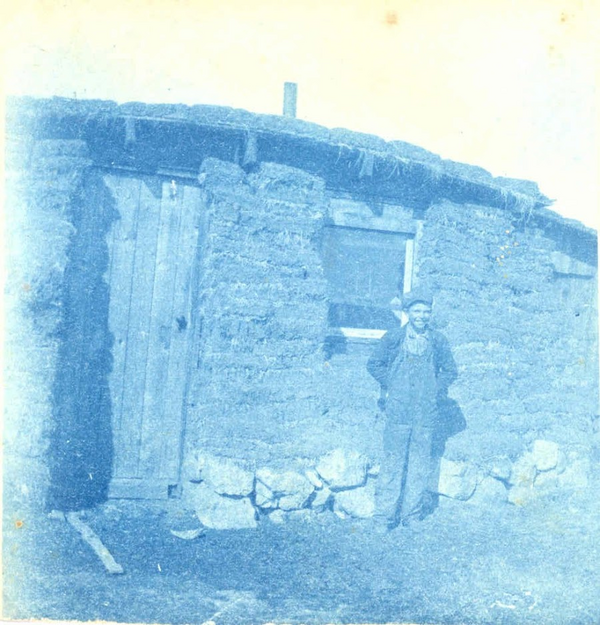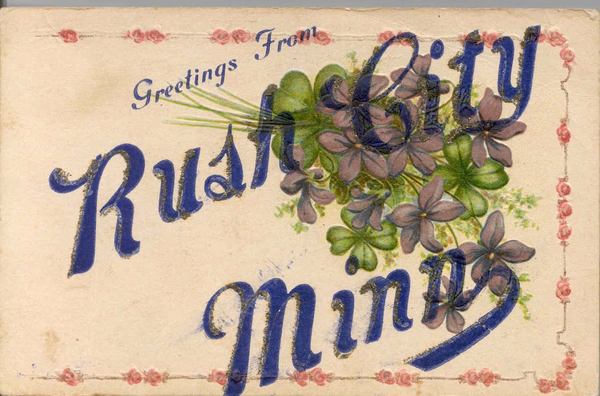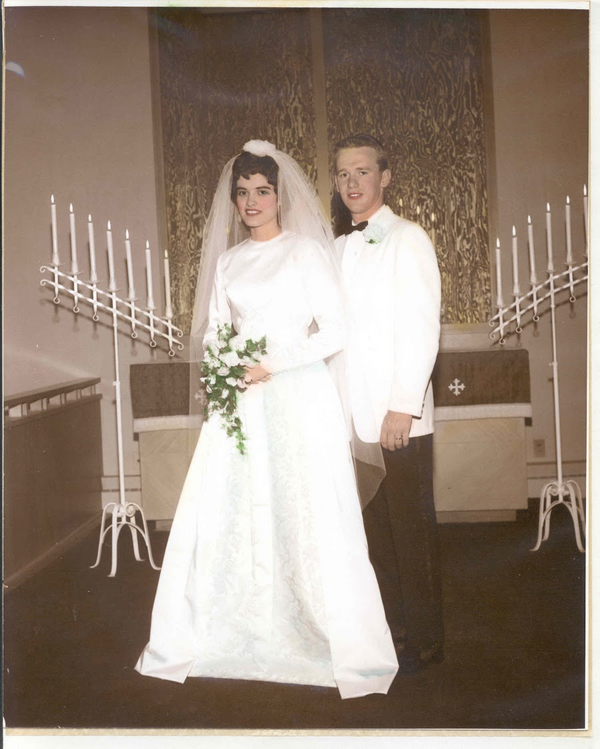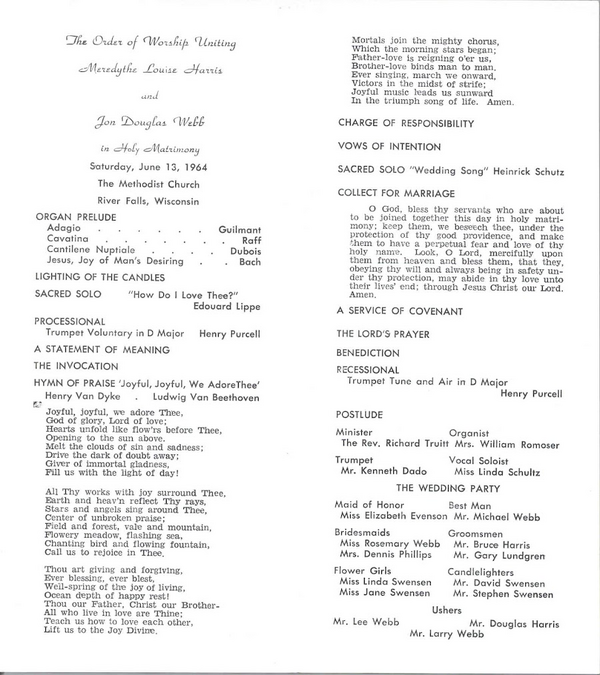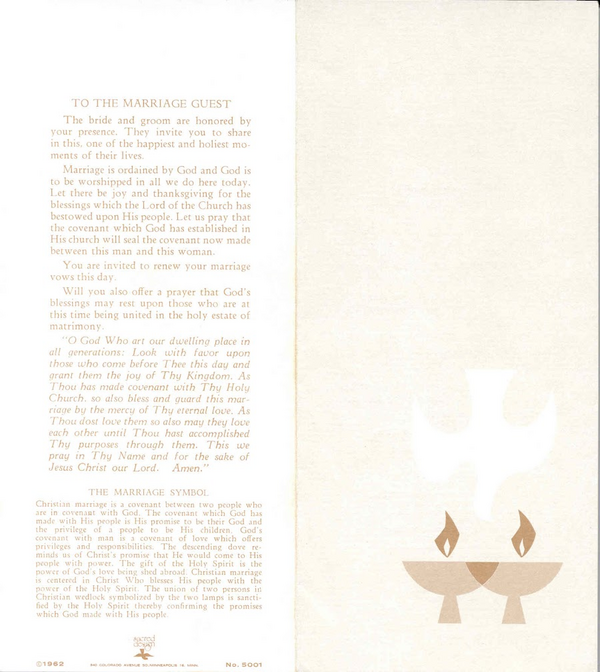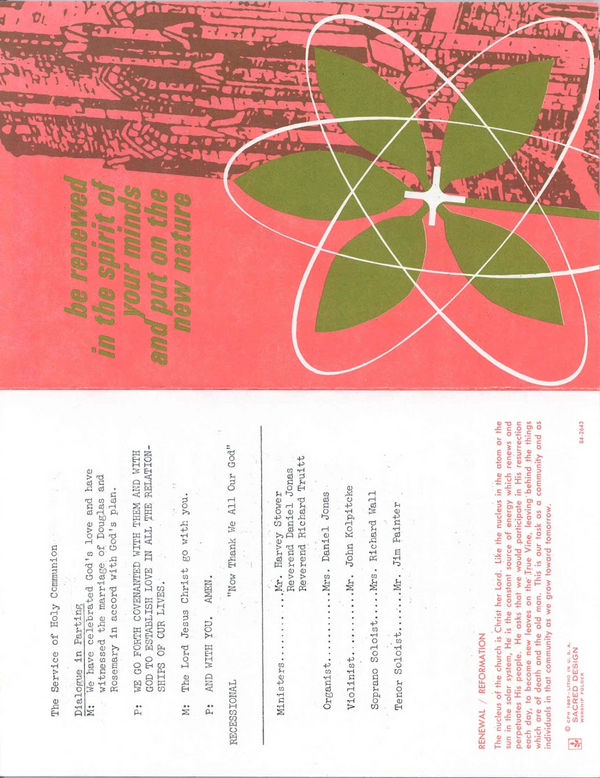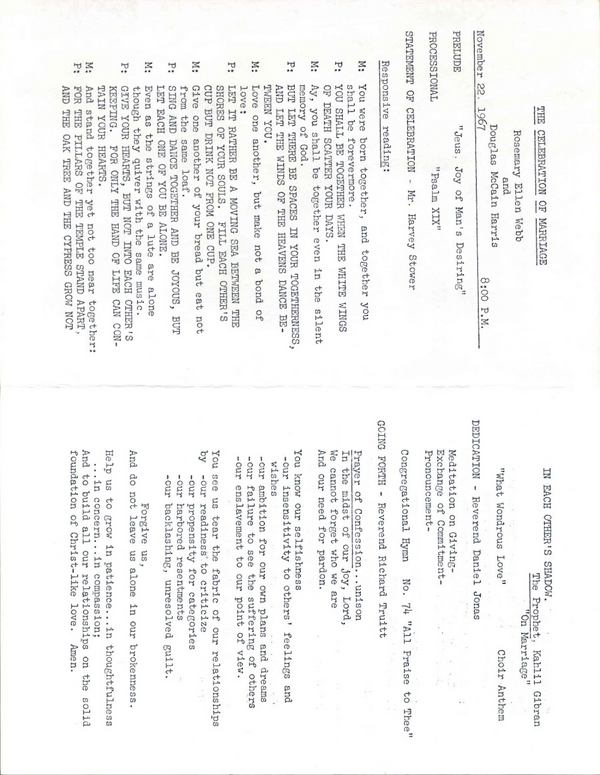Introduction
(Pg.1) Although I was with acquainted with my Grandfather, Adam Boice McCain, from the year 1886 to the year 1891, it has occurred to memory times since then that I know very little of his younger manhood and practically nothing of his youth and boyhood.
My wife, Willa Holmes McCain, has suggested that for the benefit of someone in a future generation who is minded to investigate the family tree, I should write a little about myself. These paragraphs are written in response to this suggestion.
The McCain ancestry as far as I can find it is as follows: [Insert extra sheet numbered 12.]
I shall introduce my Grandfather’s family more in detail for his children are, of course, my uncles and aunts. Dates of birth I can not give but order of arrival I believe to be correct.
Genealogy
PATERNAL ANCESTORS
Adam Boice McCain, Grandfather (our grandfather). Born 1822. Died 1901. Married (date unknown)
Lucinda Thompson (birth/death dates not known)
Children:
- Anna McCain Bucharman (Aunt Anna, Uncle ?)
- Harvey Curtis McCain, My Father (1847-1918). Married Martha Jane McCurdy 1849-1925
- Anson Jay McCain (Uncle Jay)
- Eva McCain Flinke ? (Uncle Frank)
- Clarence Oscar McCain (Uncle Oscar)
- William Elvin Cheever McCain (Uncle Cheever)
- Lynn Paley Morehead McCain (Uncle Lynn)
- Jessie McCain Thompson (Uncle Frank T.)
- Merle Arnot DeAberna McCain (Uncle Merle)
There were, I believe, two other children who died in infancy.
MATERNAL ANCESTORS (PG.2)
James McCurdy (My Gt. Grandfather 4/17/1777 – 2/24/1872)
Margaret Thorn (My Gt. Grandmother 4/10/1784 – 2/16/1864)
James McCurdy married Margaret Thorn 4/14/1803
Joseph Thorn McCurdy, their son, my Grandfather, 1/12/1812-6/26/1898, married
Nancy Craig, my Grandmother, 3/14/1819-2/25/1905
Nancy’s Parents
- John Craig, my Gt. Grandfather (12/2/1789-3/25/1868) married on 10/2/1810
- Mary Doughtery, my Gt. Grandmother (9/8/1786-8/3/1876)
Joseph’s & Nancy’s Children:
- John Craig McCurdy (died in infancy)
- Margaret McCurdy Monroe (Aunt Margaret ???)
- Caroline McCurdy (Aunt Carrie)
- Martha Jane McCurdy McCain (my mother)
- James S. McCurdy (Uncle James & Aunt Kate)
- Cora McCurdy Campbell (Aunt Cora & Uncle Mord)
- Robert McCurdy (died in infancy)
MY PARENTS
Hervey Curtis McCain, My Father 1847-1918 married
Martha Jane McCurdy, My Mother 1848-1925
Children:
- Anna Mary Violet McCain 1872-1914 not married
- Margaret Agnes McCain Steiner 1874-
- Belle Craig McCain 1876-1880
- Thorne McCurdy McCain 1878-1935 not married
- Allison Boice McCain 1880- (myself)
- Gertrude Velma McCain 1882- not married
- Herbert Hoyt McCain 1885-1922 not married
- Caroline Winnifred McCain Brownell 1889-
- Myrtle Jane McCain Lydell 1891-1924
This brings the record down to my immediate family which is as follows:
FAMILY OF ALLISON BOICE MCCAIN (MY FAMILY) (PP.3-4)
Allison Boice McCain b.12/8/1880, married on 6/28/1911
Alice Louise Barnes 6/24/1888-3/30/1940
Children:
- Allison Boice McCain Jr. 5/18/1912
- Elizabeth Louise McCain Harris 10/3/1913
- Robert Francis McCain 5/18/1917
- Leland Thorne McCain 5/5/1922
Allison Boice McCain (myself) married on 8/20/1941
Willa Gertrude Dunbar b.6/13/1897
No children came from this marriage.
From her previous marriage Willa had two daughters
- Delores May Dunbar Austin 10/19/1920-4/4/1952
- Donna Maria Dunbar Brownell 9/9/1925-
Grandchildren belonging to Willa’s and my combined families as of now, 8/18/1959 are:
1. Allison Boice McCain, Jr. (8/18/1912-) married on 8/1937 Mry Anita Ritchie McCain (5/18/1912-) Children: 1. Alan Ritchie McCain (3/18/1939- )
2. Thomas Allison McCain (11/13/1941- )
3. Bruce Leland McCain (3/3/1944- )
4. Mary Elizabeth McCain (7/12/1948- )
2. Elizabeth Louise McCain Harris (10/3/1913- ) married on 6/1937
Wilfred Charles Harris (4/29/1913-1969)
Children: 1. Meredythe Louise Harris (322/1941- )
2. Bruce Wilfred Harris (3/24/1944- )
3. Douglas McCain Harris (4/19/1947- )
3. Robert Francis McCain (5/18/1917) married on 11/1938
Harriet Mielke McCain (2/11/1918- )
Children: 1. Sandra Jean McCain (1/11/1941- )
2. Daniel Allison McCain (4/21/1943- )
3. Richard Scott McCain (12/6/1954- )
4. Michael Robert McCain (8/21/1961- )
4. Leland Thorne McCain (5/5/1922- ) married on 6/6/1959
Lynette Fisher Cruver (5/31/1922)
Children: 1. Elaine Cruver (1/26/1948- ) from Lynette’s previous marriage:
(Pg.4) Grandchildren from Willa’s previous marriage
1. Delores May Dunbar Austin (10/19/1920-4/4/1952)
Children: 1. Allison Christopher Austin (4/9/1943- )
2. Donna Marie Dunbar Brownell (9/9/1925- )
Children: 1. Gwendolyn Carol Brownell (9/20/1944- )
2. Bryan Montgomery Brownell (11/3/1947- )
3. Shelly Veronica Brownell (5/21/1954- )
As an interesting side-light here note that Donna Marie Dunbar, my step-daughter, married my nephew, Donald Brownell, my sister Carrie’s son. This gives rise to some peculiar relationships. For example, my sister and I have the same grandchildren. I am my daughter’s uncle, etc.
My Youth
I was born Dec. 8, 1880 on a farm located in Armstrong County, PA, about three miles west of Kittanning, PA, ???? was a farmer farming rented land.
My Grandfather, Adam Boice McCain, had raised his family in Clarion County, PA, living at a place called Red Bank as I seem to remember. He with most of his family moved west in the early 1880’s to ?? a near Council Bluffs and a year or two later drove their farm animals to South Dakota accompanying with teams and wagons.
My grandfather and other members of his family filed on government land on Box Elder Creek, Pennington County, South Dakota about fifteen miles east of Rapid City. They urged my parents to do likewise.
In July 1886, the farm home in which my parents lived burned to the ground and they lost practically all of their household goods. This looked to be the time to go west if they ever were going. So the first big event which I can remember in my life came in July 1886 when our family moved from Pennsylvania to South Dakota, then Dakota Territory. I remember that the first railroad to the Black Hills was opened that summer from Shadron, Nebraska to Rapid City. As a child I had heard that the railroad ended at Rapid City. I spent sometime on the trip worrying for fear the engineer would fail to stop before running off the track at the end.
TOUGH YEARS, 1886 – 1891
The five years from 1886 to 1891 although pretty tough for my parents were for me very happy care free years for we lived on a ranch either adjoining or within easy walking or riding distances of ranches occupied by my Grandparents or my Uncles, Aunts and cousins of whom there were many of all ages.
Sioux Indians
One incident was not so happy at the time but was resolved with no serious results. The Sioux Indians became dissatisfied on their Reservation near the Cheyenne River and threatened the whole prairie country between there and the Black Hills. One night, at least, the whole McCain clan in the neighborhood spent at Grandfather McCain’s house children sleeping on blankets all over the floor while all grownups were ready to defend themselves with all manner of weapons available.
The tension was soon removed when shortly after, a few companies of cavalry passed our place going toward the Indian Reservation and we were assured that soldiers were stationed between us and the Indians.
(Insert pp.62)
Our Home
I have just mentioned that the years spent in South Dakota were tough ones for my parents. Money was scarce so the house on the ranch was made as simple as possible and still furnished us protection. Even at that, it was better than the living quarters of some of our neighbors. It was not constructed of mud and the roof was not thatched.
The house was on the hill side so that the upstairs door at the rear opened on the ground level. Downstairs was all one large room used for kitchen, dining and living room. The heat was furnished by the cook stove and this was the only heat in the house. The two bedrooms upstairs got pretty cold in the winter.
Father dug a well not more than twenty feet from the door of the house and found an abundance of water at the depth of less than fifteen feet but unfortunately the water was so strong of alkali that it was not fit for human consumption but it furnished water for stock. A gulch hole about two hundred yards from the house was fed by a spring of fresh water. Father dug a well to intercept the flow of the spring and at six feet found good water. From this well all water for family purposes was carried.
Scarcity of Fuel
Another thing that added to the difficulties was the scarcity of fuel. Coal could not be obtained without making the trip to Rapid City which was fifteen miles from the ranch and the price was so high that it was prohibitive. In the Black Hills was a burned over district some twenty five to thirty miles from home where ponderosa pine logs charred on the exterior could be had for the work of going and getting them.
During the summer when a time came that ranch work was slack father would go to the timber for fire wood. Usually he would go with one of his brothers or a neighbor so there would be two men for cutting and loading logs. With teams and wagons they would start on a morning and return about evening of the third day. Such a trip consumed about three days. They took with them a grub box and supplies and utensils and a bedroll so they ate and slept without depending on any other person.
When the wood was brought home it still had to be sawed and split to stove size. I can remember of pulling one end of a cross-cut saw with my brother Thorne at the other end what seemed to me interminably. I suppose it was not much wood we sawed for two boys eight and ten years old respectively would not accomplish much.
Frost-Proof Cave and Blizzards
Father built a frost proof cave in the side of the hill beside the house in which potatoes, cabbage and other garden products and canned goods were stored. When the door was closed for the winter of course outside the door must be packed with straw to prevent freezing. Then when a mild day came in the winter, it was a chore to open the cave and get out supplies and repack it again.
Some of the winters while we were in Dakota were very severe. Well do I remember one short blizzard which was raging when we went to bed but subsided during the night. In the morning, the wind was gone but when father opened the door he found the vestibule between the inside door and the storm door piled full head high with snow which had found its way through some small crack or the key hole. He put one his hat and mittens and through the other door when quickly to the barn, got a shovel and returned. Before doing any shoveling, he came into the house. His ears and the tip of his nose were frosted white. Unannounced the mercury had dropped to 40° below zero.
Another blizzard of much longer duration is also indelibly registered in my mind. You can find it recorded in weather bureau statistics of the winter of 1888-89, I believe. Father had made arrangements to take a load of hay to market in Rapid City starting from Grandfather’s place half a mile distant. He started from home early, walked to Grandfather’s, hitched up the team and started with the sky clear, the stars shining brightly. Before he had gone half a mile the wind laden with snow struck. His first thought was to go ahead a mile to his brother’s ranch and check in but the horses refused to face the wind, so he unhitched them, left the hay and returned to Grandfather’s place, put up the team then hastened home. He then found facing the wind he could not see to keep on the road. He turned his back to the wind and found that by walking backwards the snow was blown from the road so he could see the path. It was well after day light before he was home. When he came in, he was a site to behold, almost literally he was a snow man from head to foot. And to this day I can see mother throw herself into his arms crying—and I wondered why she cried!
That blizzard lasted unabated for three days. Step out of doors and one could not see his hand held up before his face. For those days father could not get to the barn to care for the stock. He might easily have lost his way and never been able to find his way back to the house.
Financial Matters
Financial matters always were pressing. It had not yet been proved or admitted at least, that an eastern farmer using the methods he had learned can not subsist on a ranch such as has found in western Dakota. Father helped prove it. To keep alive he had to find some income more than the ranch produced.
If he heard that a sheep man needed shearers father would be there, work till the shearing was done then probably walk the 20 miles home. A new railroad is going through some 20 or 30 miles away father would be there with this team and wagon and work on the grading. By such methods he succeeded in feeding his family but there were times when they were half way through the last sack of flour and they did not know how they could get the next one.
I remember this incident but at the time I did not know that it had anything special to do with my stomach. I have heard mother tell it years later. There was not enough flour in the house to bake bread and not enough bread to set up a meal for strangers when out of a clear sky six men stopped at our ranch drumming up votes for the coming election. They asked her if she would get them their lunch. She guessed she could find them something to eat. She had plenty of butter, eggs and milk and if they could wait that long she would bake bisquets. With whatever else she had on hands they got a pretty good lunch and asked for the bill. She said twenty-five cents a piece. They said such a meal as that is worth more than 25¢ and left her fifty cents each. Next day some neighbor who was going to Rapid City brought her a grocery order including flour all paid for with her three dollars.
(Here insert red bracketed paragraphs from pp. 21-22)
I am impressed with what seems to me must be true, that small children if they have love and care, grow up with the memory of a happy childhood even when material things often were wanting.
One Christmas when a small boy in S. Dakota, I received as a gift a coin purse that fastened with a clasp. I am sure it cost my parents 5 cents, but it never occurred to me to think it should have been more.
(Back to page 6)
One Christmas my father selected a nice piece of straight grained pine from the wood box and began to whittle. We soon became interested but he just kept on whittling. After considerable time he had a wooden doll with well shaped head and features which he gave to my sister not yet two years old. Mother made clothes for it and for years it was on of my sister’s prized possessions. It was a boy doll from its features and was always called Ed Warner because it resembled a cowboy in the neighborhood by that name.
From the time I was 14 years old I always found work during summer vacations. My first job was weeding gardens at 40 cents a day for a ten-hour day. As I became older I worked at day labor for a building contractor, as a helper for a dish-maker in a pottery and in furniture factories. Wages often were so low that it sometimes seemed to be hardly worth while working. Yet my brother and I were always able to buy our own clothes for the next year’s school and still have a few dollars laid away for spending money.
BACK TO PENNSYLVANIA, 1891 – 1900
When my parents had “proved up” on their claim after spending five years there they immediately returned to Pennsylvania in October 1891.
MY SCHOOLING
My schooling from that time till I was about seventeen was in a one-room country school or in the village school at Manorville, PA a couple of miles south of Kittanning. High School was not available without paying tuition so instead of high school I went to Slippery Rock State Normal School where my older sisters and brother were also attending school.
Summary of Teaching Work
- Public School of Pennsylvania 3 years (1904-06?)
- Ann Arbor HS Michigan 6 years (1908-14)
- Washington HS, Milwaukee, Wis 37 years (1914-51)
- Milwaukee School of Engineering 6 years (1951-57) TOTAL 52 years
MATTHEWS SCHOOL, 1900-02
I taught my first school in the Matthews School near Edinburgh, Lawrence Co., PA the year of 1900-1901. I then returned to Slippery Rock State Normal School from which I graduated in 1902.
SLIPPERY ROCK STATE NORMAL SCHOOL, 1902
The year following my graduation an additional year was added to the Normal School course. This made it necessary for the school to hire several extra teachers to supply the training school with teachers. I accepted one of these positions which employed me as a half-time teacher and allowed me to take half-time graduate work thus building up a few advance credits which stood me in good stead when I entered college.
UNIVERSITY OF MICHIGAN AT ANN ARBOR, 1903-08
The next school years, 1903-1904, Miss Mandel C. Bingham, a teacher in the State Normal School, bless her heart, seemed to have taken a special liking to me and sent me, all expenses paid for a year and summer school, to the University of Michigan at Ann Arbor. Following this I taught for two years in the public schools of Pennsylvania, one year at Parker’s Landing in Armstrong County and one year as Principal of the North Shenango Centralized Township Schools at Espyville Station, Crawford County. I then returned to Ann Arbor where I graduated at the University of Michigan Class of 1908, A.B. degree.
ANN ARBOR HS AND WASHINGTON HS, 1908-51
Following graduation I taught mathematics in the Ann Arbor High School for six years then September 1914 I moved to Milwaukee, Wis. Where I taught mathematics in Washington High School for thirty-seven years. I was Chairman of the Mathematics Department from 1918 until I retired at age seventy in June 1951.
RETIREMENT & MILWAUKEE SCHOOL OF ENGINEERING, 1951
We bought a place in Waukesha Country at Goerke’s Corners about fifteen miles from Milwaukee in 1950 and spent much time during the next two or three years in remodeling and garden work.
In September 1953, the Milwaukee School of Engineering offered me a position to teach preparatory mathematics, algebra and trigonometry. I have filled this position now for six very satisfying years.
Marriages
My marriages have been most satisfying and happy. Two reasons they have been happy are (1) Religious agreement in all major matters (2) A willingness where agreement seems not possible, to agree to disagree and love each other because we recognize the honesty of the other.
MARRIAGE TO ALICE LOUISE BARNES
While teaching in the Ann Arbor HS, I met Alice Louise Barnes, a university student class of 1910. We were married June 28, 1911 at Artesia, Cal. She died March 30, 1940. The summer of 1941 while attending Summer School at the University of Wisconsin I became acquainted with Willa Holmes Dunbar who had lost her husband. We were married August 20, 1941 at Madison Wisconsin and have been very happy about the arrangement ever since. I am now, August 19, 1959, recuperating from a long hospital experience which kept me in the hospital from June 29 to July 29.
Religion
There remains one important phase of my life which must be mentioned if anyone wishes from this writing to get a picture of the kind of man I am and have been namely that I am a religious man. I joined the Methodist Church when I was about fourteen years old and have been a member of that church ever since. I have been a regular attendant of church and have carried a share of the load of the church all down the line including young people’s work, Sunday School, Official Board, etc.
Of late years we have become much interested in the Camps Farthest Out Movement which is undenominational but far from opposing any denomination, urges people to be active supporters of their various churches.
Changes in Work and Play
Many changes both in work and play have taken place in my life time partly due to the change from country to city living and perhaps to a greater extent due to power conveyance on land, water and air.
APPLE BUTTER TIME
In Pennsylvania, in my boyhood days, there came, when apples were ripe the time to make apple-butter. Most families considered this very necessary. The chore of getting five or six bushels of apples all dressed and ready to cook into apple-butter and then the long job of cooking them down into apple-butter was too big an undertaking for the women in one household so it was made something of a social event as well as a cooperative piece of work.
If apply butter was to be made at our house, my mother and one or two neighbor ladies worked together to get the apples ready then bright and early the next morning the cooking began. A large copper kettle was hung over an outdoor fire place and in this the apples were cooked. Stirring with a long-handled stirring stick must be kept up constantly to prevent burning.
Sometime in the afternoon the experienced house wife could see that the necessary cooking was done then was added sugar, cider, spices etc. to suit the taste of the family. The apple-butter was usually stored in one, two or three gallon crocks, sealed up carefully and placed in the cellar for winter use. It was not unusual to stir off 10, 15 or even more gallons at one cooking. Of course it is understood that when another of these cooperating ladies was ready to make her apple-butter the performance was repeated at her house.
HOME GAMES
In the Country and in small towns, in my boyhood, there were no reputable places of amusement so it was very necessary to amuse ourselves. Ours was a family of 8 children so it was frequently possible to get a group of four to six or more who were glad to sit down and play games of various kinds. Being Methodists, in those days any cards marked with spades, hearts, diamonds or clubs were taboo but any other pictures or numbers could be used in card games with no objections. Anthars??, flinch and many others were invented.
If there were not enough folks in our family who were available for a game it frequently was possible to find neighbor who would come to our house and another evening we would go to their place. Charades always was a good game and there were many others.
Playing “poetry” was a favorite in our family and gave rise to much merriment. Seated around the dining table, each player was provided with paper and pencil. Each player wrote a noun on the upper right-hand corner of his paper and folded the paper down then passed it to the player to his left who did the same thing. The third to get the paper opened his paper and must write a “poem” usually or rhyme containing the two words. Believe it or not we had some funny results. A very unimportant part of the game was then to guess the two words that brought forth the poem.
THE FLAT BOAT – “JANE”, 1908
In 1905 the family moved to Falconer, NY, near Jamestown. When I returned from college the June 9 graduated, 1908, I found that my brother, Thorne, was just completing the construction of a flat boat 16 foot long by 3½ foot wide at its widest place. He proposed to use it for a trip down the Alleghany River and chose as companions me and a neighbor boy, Ronsom Lydell, who later became our brother-in-law by marrying our younger sister.
The start of this trip was not auspicious. My brother had no experience as a boat builder and the seams had not been sufficiently packed and tested for leaks. We started on a small creek at the outlet of Lake Chautauqua, NY a couple of miles south of Falconer NY. This creek flows into the Alleghany River at Warren, PA some 25 or 30 miles from our starting point. When the boat was put in the water loaded with our camp equipment and ourselves it leaked so badly that at first we thought maybe we should make repairs before starting. However by keeping one man bailing constantly we proceeded to the next town eight or ten miles down stream. There we pulled the boat on shore, turned it bottom up and securing the necessary packing material and tools worked the rest of the day packing every seam.
We then righted the boat, made our beds on the creek bank and anxiously waited to see what the morning would show.
It was not small satisfaction in the morning to find not so much as a quart of water in the boat. So we were soon on our way again and experienced no more difficulties with a leaky boat.
Navigating these creeks before we reached the River at Warren was much more tricky than navigating the wider more predictable river. A section 9 feet long in the center of our boat was covered with a canopy and side curtains to protect from rain. To protect this from overhanging trees and also protect the boat from rocks protruding from the bottom of the creek kept us all alert. At one place, we were obliged to unload our cargo and portage around the end of a mill dam. Following this were about ten miles of swift running shallow water which we found we could navigate safely only by keeping one man at the oars, one at the rudder and the third standing with a pike pole on the front of the boat to guard from rocks which suddenly appeared which could not have been seen nor avoided by the man at the rudder. We reached the river at Warren however with not more serious mishaps than a pair of two wet trousers and our navigation difficulties were nearly all behind us.
At one place we saw a drift coal mine in operation, bringing out coal and dumping it into railroad cars. We tied up our boat and got permission to visit the mine. We were taken to the back of the mine when an empty train was taken in then brought out in an empty attached to the end of a loaded train. This has been my only visit to a working coal mine.
It was our custom to sleep nights on the bottom of our boat especially if the weather appeared at all rainy. On one occasion this was fortunate. We went to bed with the boat on a level shore pulled entirely out of the water. I woke in the morning to find the boat rocking and upon looking out found we were floating entirely surrounded by water. Fortunately the boat had been tied securely on the shore. An old legless chair which we used in the boat had floated away was our only loss.
We had camped just a little north of Red Bank Creek which emptied into the Alleghany from the other side. Heavy rains up the Red Bank Creek had flooded the creek and when it emptied into the river the river had backed up thus causing our campground to be flooded.
We stopped at two or three places along this past of the river just long enough to make calls on friends or relatives living there. At Kittanning where Thorne and I had lived so long we spent a couple of days with Uncle Mord and Aunt Cora Campbell.
When we left Kittanning we continued our journey toward Pittsburgh for only 20 or 25 miles. The weather had become rainy, the river was running high, our cash for the trip was running low so we chose a suitable railroad station to which we could get our boat and shipped it back to Falconer and we took our several ways home where we all arrived a few days later. We were probably about 15 or 20 miles from Pittsburgh when we returned.
I have never figured up the distance we traveled. By automobile road I think it is near to 200 miles. We were about ten days on the trip.
A VISIT TO SOUTH DAKOTA
The summer of 1909, almost eighteen years after our family left South Dakota my youngest sister, Myrtle, who was 6 weeks old at the time we moved east, and I returned to South Dakota for a visit. The changes that I found in these people were only changes due to passing years. My Grandparents were both gone. Two uncles with their families who were still at home had moved to Rapid City. A younger uncle and his family still ran a large ranch at the site of the Grandfather McCain homestead. One cousin was a horse dealer on a ranch near there. The small cousins with whom I had played as a small boy now were grown men and women. But they all remained the same warm hearted people. I remembered them. They treated Myrtle and me not as green horn cousins from the east but as members of their families and gave us a very unusual vacation.
Two incidents of this vacation I think will be of interest by way of comparing the passing age with the incoming age of the automobile.
A TRIP TO THE BAD-LANDS
Prof. Van Ise, of the South Dakota School of Mines, conducted a one-day hiking trip in the Bad-Lands. Our cousin, Wanda McCain, Myrtle, I and some twenty other young folks of Rapid City went on the trip. We left Rapid City by train for Scenic, a station in the Bad-Lands, where we arrived about eleven o’clock at night. From there the group hiked several miles to the Wall of the Bad-Lands from which place the hike was to begin in the morning. Sleeping as best we could in our clothes the company waited until morning.
We had brought from Rapid City lunch and as much water as we could carry in canteens and found no place to replenish our supply of either until late in the afternoon of the next day when our hike was practically ended. When morning came we started on the day’s march. The weather was hot and by noon our water supply was low. At every gully or ravine we looked hopefully for any sign of water but found in one until late in the afternoon when we rounded a point of high ground we saw up in the ravine a shack where two cow-boys lived. It had been built beside a spring of good drinking water. Some of the ladies in the company were by this time so exhausted they were ready to sit down and wait for anything that might happen. Two or three of us young men took what canteens we could carry and started ahead to get water to bring back to those who were played out.
The cowboys who occupied this lonely shack and cared for cattle that pastured on the prairie had visitors so seldom that they were glad to entertain company. When they saw us coming they met us on their horses, took our canteens, filled them and took them back to those who were sadly in need of water. Soon we were all in the shade of their shack, drinking all the water we could and eating the lunch we had been carrying all day.
Our guide, of course, knew this spring as the end of our hike and had been hoping to see it in each ravine we passed for some time. Having rested and refreshed ourselves we scaled the Wall of the Bad-Lands back of the shack and hiked back to the railroad station where a train picked us up and took us back to Rapid City that night.
How much of the Bad-Lands did we see? Now, in an automobile, I suppose in twenty minutes or half an hour one can see more of the Bad-Lands than we saw in a whole day. But I think we knew the Bad-Lands better than one ever can know them by automobile. We experienced the Bad-Lands—and we had fun.
A CAMPING TRIP IN THE BLACK HILLS
Soon after the Bad-Lands trip which I have just written about, a camping trip in the Black Hills was arranged. Ten of us all cousins but two varying in ages from about fifteen to twenty-eight made up the party. Only three of us were boys.
Uncle Cheever McCain and Cousin Clyde McCain were ranchers and had saddle horses available. Uncle Jay and Uncle Oscar were living in Rapid City but each had a team and a spring wagon which were put at our disposal. So it was arranged that ten of us with five saddle horses and two spring wagons with camping equipment both for cooking and sleeping would take the trip.
The day of starting, by the time those living in the country had arrived and we were ready to start from Rapid City, it was well past noon.
Our trip was to be west and south from Rapid City. We headed west and by the time to camp for the night, Rapid City was behind us and we were well into the foot-hills. We had a large house tent in which the girls slept. The boys each with his bed roll slept in the open with only the stars and the pine trees over head.
The second day when evening came we had arrived at Sylvan Lake. There was plenty of open country so we picked a camp site to please ourselves. The next day was to be spent on our trip to the top of Harney’s Peak. We hired five burros and with our five saddle horses started amid much merriment on our trip which was about five miles each way. One of these burros whom I promptly named Rastus was a rather stubborn animal and the owner carefully instructed us that no girl was to ride him. Since I was the eastern green horn I was immediately elected to ride him. Having become used to riding saddle horses, I failed to make sufficient allowance for difference in size so when I first vaulted into the saddle I never stopped on Rastus’s back but I found myself on the other side of the best standing on the ground. Rastus didn’t seem to care and I had no difficulty riding him to the top of the peak.
For the last few hundred feet of the ascent we tied up our animals and scrambled up as best we could on foot. Now, all that rough going is made smooth by carefully constructed paths with masonry steps to help one over the rough places. You find a nice comfortable look out station at the top. These conveniences were not there in 1909 neither was there a refreshment stand nor a place to get a drink. We ate our rather dry lunch then returned.
My cousin, Anna Buchannan, who was accustomed to riding all kinds of horses said she was going to ride Rastus on the return trip which she did without incident until we arrived at the point where the care taker took charge of the burros. When he saw a girl on that burro he stepped to his bridle with the remark, “I told you a girl should not ride that burro”, at which Rastus made a sudden lunge, knocked the caretaker over, jumped over him and went full tilt down the hill to the corral gate with Anna still securely seated on his back. No damage was done expect to the dignity and possibly to the clothes of the caretaker.
This same trip from Sylvan Lake to the top of Harney’s Peak can now be made by jeep in a comparatively short time. This does not mean that all crooked places in the road have been made straight nor all rough places made smooth. If you plan the jeep trip, you must still be prepared for plenty of thrills.
I think it was the next morning after this trip that two of our saddle horses had disappeared. Two of the boys spent more than half the next day hunting them without success. We did not lack transportation facilities however and the horses were found as strays and returned to their owners a couple of weeks later.
From Sylvan Lake we went to Wind Cave where we took about a five-mile walk underground. From there we visited Hot Springs where we enjoyed the plunges. The rest of the trip is not so clear in my mind. We visited Custer I believe and Hermosa from which place we returned to Rapid City having been gone as I remember about a week and a half. To me, at least, this trip has always stood out as one of the high point for pure clean fun and enjoyment in all of my life.
(See 6-2)
Conclusion
These paragraphs may seem rather dry reading. But if they point out the differences in moods of living confronted by children and young folks at the present time and people of the same age 50 to 75 years ago, they will have accomplished their purpose.
August 24, 1959 Allison Boice McCain
Transcribed in October, 2001, by Erik Scott Britt-Webb, great grandson of Allison Boice McCain, grandson of Elizabeth Louise McCain Harris, son of Meredythe (Merry) Louise Harris.
